A six-legged animal sounds incredible and unbelievable. But did you know that you see six-legged animals every day? That’s right! The class Insecta includes animals with six legs, specifically three sets of pairs. They have one of each pair of legs on either side of their body, which also has three parts. Insects have a head, thorax, and abdomen. They have one pair of antennae as well.
Within the Insecta class, there are more than one million different species. This makes them one of the most diverse and plentiful scientific classes out there. Insects account for more than half of the living organisms that we know and can study. Scientists estimate that insects may include up to 90% of all living things on Earth!
Another word for a six-legged animal is a hexapod. This translates to “hex,” meaning six, and “pod,” meaning legs in Greek, the language used for the majority of scientific naming and descriptions. Hexapods are a type of arthropod or jointed-feet animal.
1. Ant
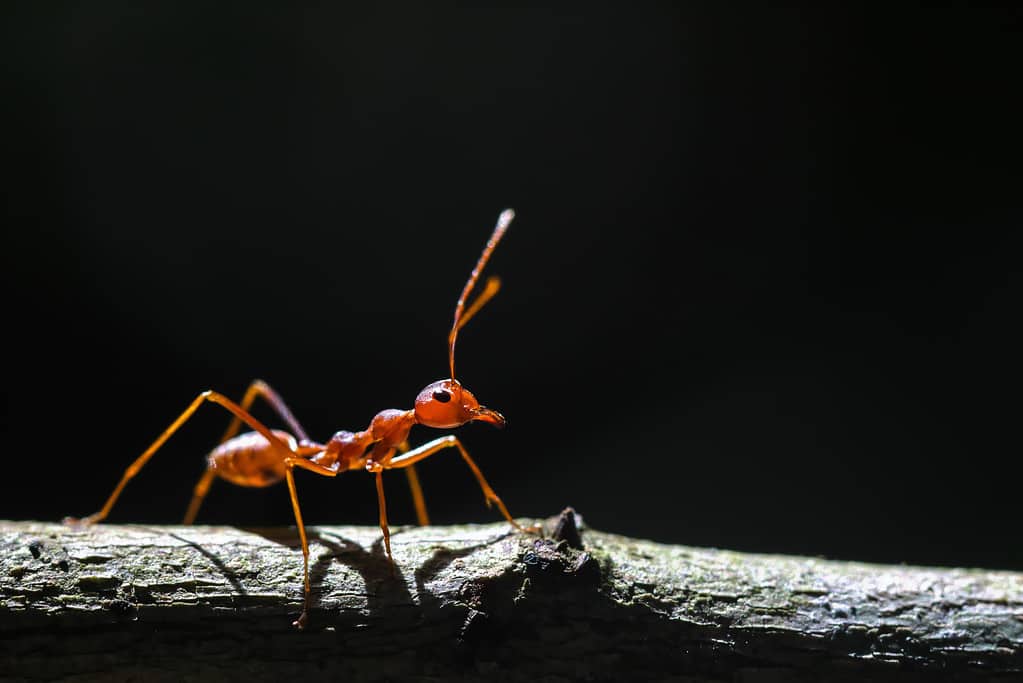
There are many species of ants, including red ants.
©Tareq Ahmed/iStock via Getty Images
One of the most plentiful members of the Insecta class is the ant. There are roughly 12,000 species of ants that are known and classified, although it’s likely that there are thousands more not yet included in the body of scientific knowledge related to insects. Ants live on every continent in the world except Antarctica.
They have six jointed legs that are attached to their thorax. The thorax is the middle section of the body of an insect, between the head and abdomen. Ant legs are very fast and help the ant run and move as needed. Ants live in colonies where they each perform specific jobs to help the colony thrive. Without their legs, ants would not be able to move around, get food, or defend the colony against threats.
2. Mosquito
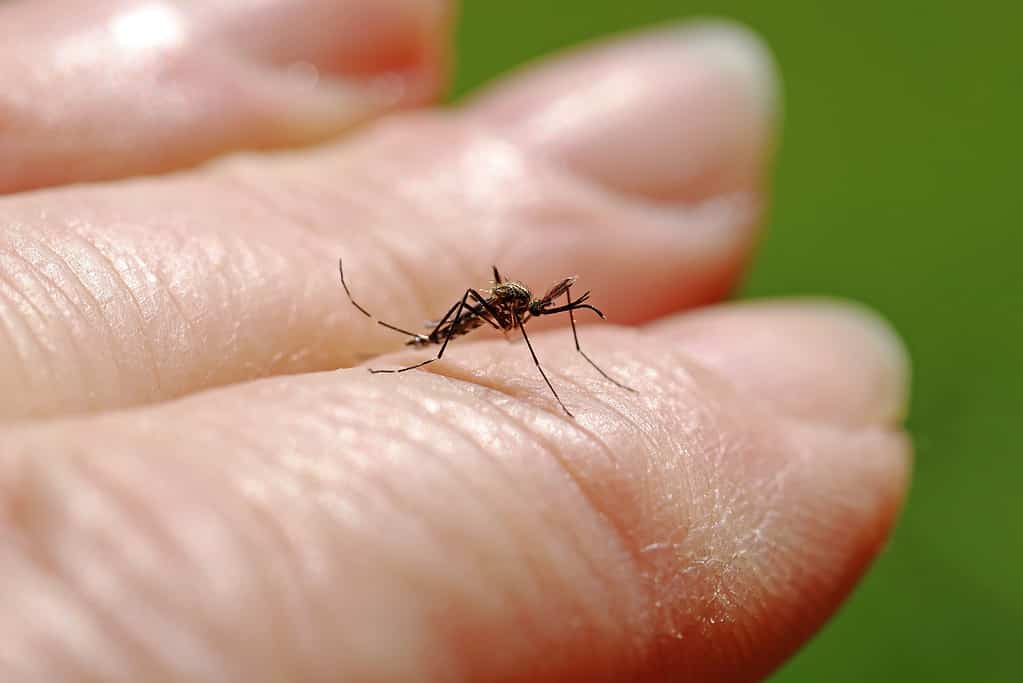
Mosquitos have very long legs that allow them to land and move on a variety of surfaces.
©Astrid860/ via Getty Images
No one likes the buzzing sound of a pesky mosquito nearby but these insects are actually quite interesting. As part of the Insecta class, they also have six jointed legs, just like ants. Unlike most ants, however, mosquitos have wings. They get around by flying more than walking. Both their wings and legs attach to the thorax.
A mosquito has a part at the end of its legs called a tarsus. This is the third and final jointed part of its leg, similar to a foot. It allows the mosquito to move around on the ground as well as walk on water and other similar surfaces. One of the many amazing facts about mosquitos includes their ability to walk on water and walls. Other insects can do one or the other but mosquitos are one of the few that can do both.
3. Butterfly

The black and orange wings of the monarch
butterfly
make them easy to recognize.
©Michael Zurawski/iStock via Getty Images
Like other insects, butterflies have three pairs of legs. Some butterflies, including the monarch butterfly, keep their legs close to their bodies. Their two forelegs can be hard to see so it appears like they have four legs. But look closer and you’ll catch a glimpse of all six legs.
Butterflies are known for their colorful wings and those are certainly the show-stoppers when it comes to their overall appearance. But their legs serve a very important purpose. Butterflies use their legs to get more information about flowers and other plants when they land. Each leg has chemoreceptors that they use as an additional sense. When they land on a flower or leaf (or something potentially harmful), these chemoreceptors send information to the butterfly’s brain about the surface. If it’s safe and tasty, the butterfly knows that it can eat. If it signals danger, the butterfly knows that it needs to leave.
A butterfly’s legs can also help pollinate plants. When the butterfly lands on the flower, it picks up pollen on its legs just like on other parts of its body and wings. As it flies, this pollen is distributed.
4. Bee
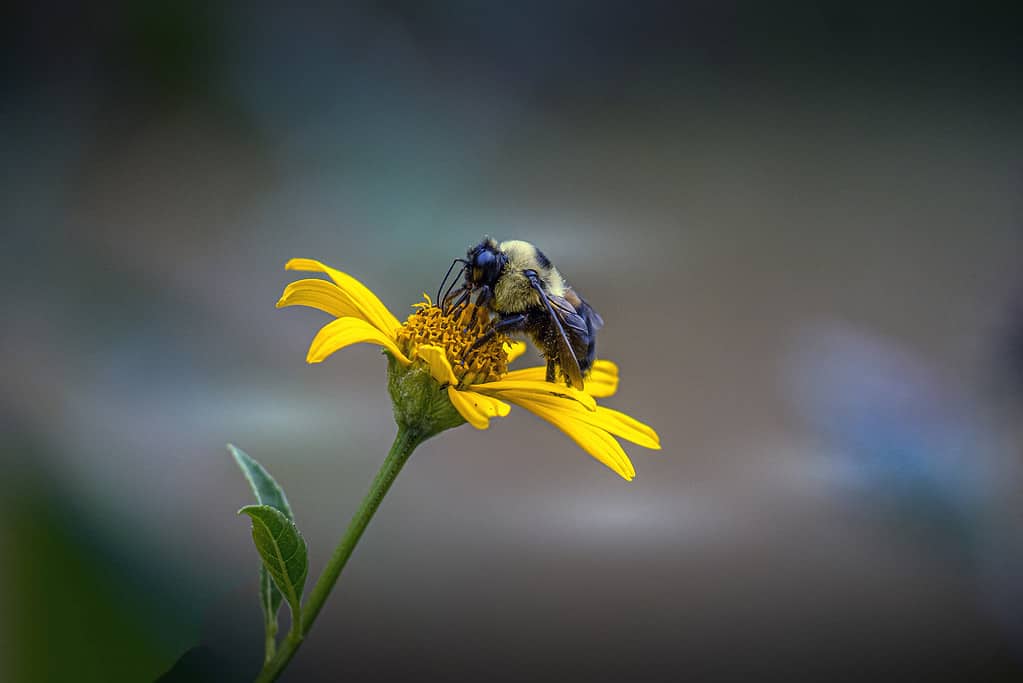
Bees use their legs to get information about surfaces like flowers and plants.
©johnandersonphoto/iStock via Getty Images
Bees are some of the most recognizable insects due to their characteristic black and yellow coloring. While not all bee species look the same, the stereotypical version of a bee with a fat black and yellow body, two wings, and a stinger is not far off in some cases. Bees also have six legs, which they use to move, groom, and reach for things.
Bees’ legs are in a slightly different position than those of some other insect species. Unlike ants and butterflies, whose legs are all connected to their thorax, bees have two sets of legs attached to the thorax and one set attached to the abdomen. They use them to “taste” flowers to determine if they would make a good food source.
5. Beetle
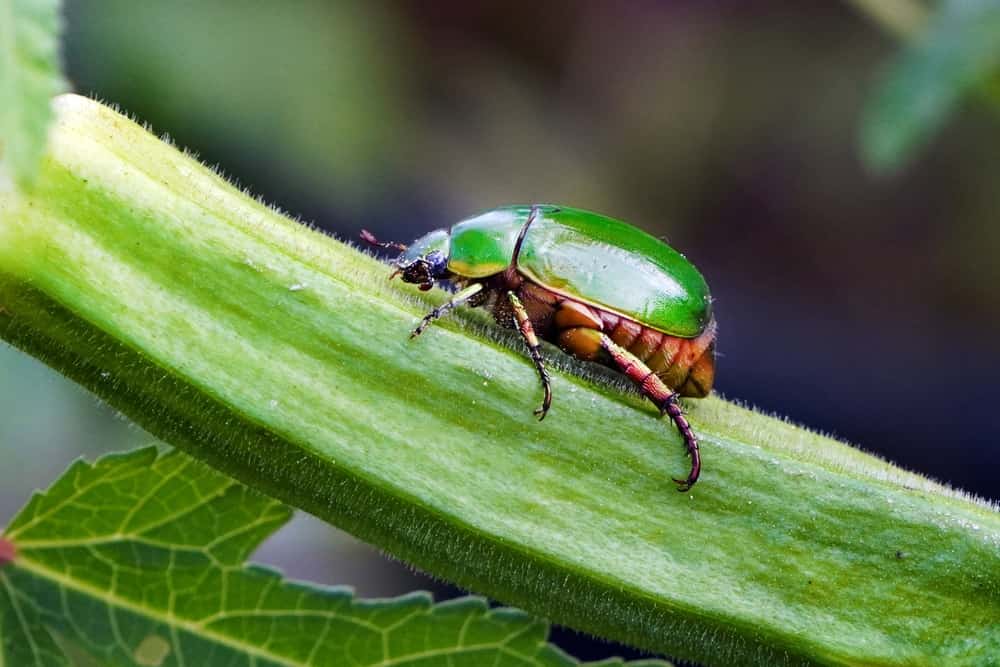
Beetles’ outer wings are hard, acting as a type of shell or shield to protect them.
©AjayTvm/Shutterstock.com
There are more than 350,000 known species of beetles in the world. Around 25% of the world’s animals are beetles. But they can range from less than 0.1 inches long to well over 6 inches long. With such a variety of species, it’s amazing that all of them have a few specific things in common, including having six legs. Beetles are part of the Coleoptera order. All six of a beetle’s legs are attached to the thorax. Their wings are also attached to the thorax.
6. Moth

Cabbage moths are mostly brown with some black-and-white spotting and banding and may have a white stripe near the edge of their wings.
©Chelnokov Vladimir/Shutterstock.com
Although similar to butterflies in that they have large wings and similar body parts, moths are a distinct type of insect. Like butterflies, they belong to the Lepidoptera order but there are a few key differences between butterflies and moths. Butterfly antennae are clubbed with balls on the end of a slender antenna. This helps the butterfly keep its balance. Moth antennae, on the other hand, are more feathery. Moths also tend to be duller in color and often lack the flashy colors and patterns on their wings that butterflies are known to have. Moths rest with their wings extended while butterflies mostly rest with their wings folded. Butterflies and moths do have the same number of body parts, three, and legs, six.
7. Cricket
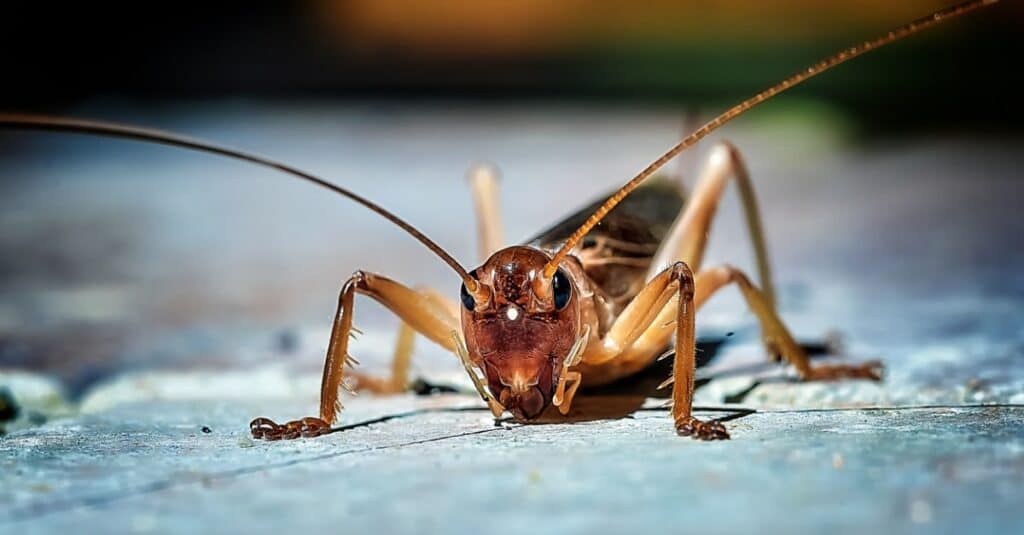
Crickets have long antennae that help them get sensory information.
©iStock.com/tracielouise
Crickets have some of the most powerful legs of all the insects. They have three pairs of legs but it is the hind legs, the ones furthest back from their head, that really give them some extra oomph when they jump. The same is true of grasshoppers. Their hind legs are especially long, which allows them to jump far distances relative to their size. House crickets, which are less than an inch long, can jump up to 3 feet!
8. Aphid
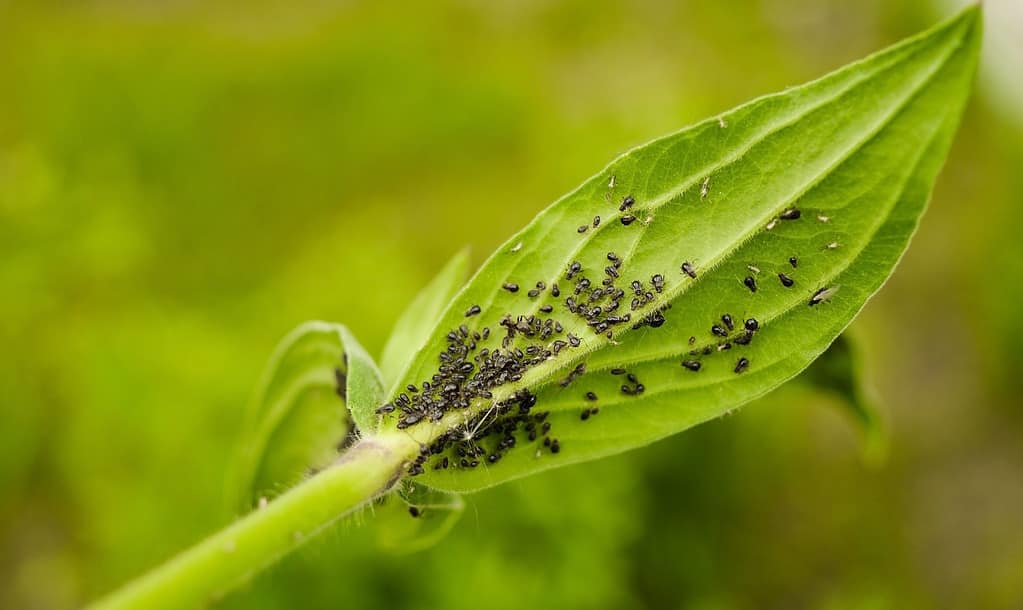
When they hatch, aphids can quickly take over a garden plant and cause a lot of damage.
©iStock.com/Irina Starikova
If you are an avid gardener, you’ve probably run into a few aphids as you try to keep your plants free of pests. These insects belong to the Aphidoidea family and are known for being sap-suckers that like garden plants. They can cause issues with growth and development in plants, either feeding on them as larvae or adults. Many chemical pesticides and natural gardening remedies are designed to get rid of aphids. Aphids are six-legged, with three pairs of legs that are often quite long. These long legs help them get around in the garden and on plants. Some species, however, have short legs. Some aphids prefer one specific type of plant, such as apple aphids, while others are not as picky.
Summary of Six-Legged Animals
| Number | Animal |
| 1 | Ant |
| 2 | Mosquito |
| 3 | Butterfly |
| 4 | Bee |
| 5 | Beetle |
| 6 | Moth |
| 7 | Cricket |
| 8 | Aphid |
The photo featured at the top of this post is © iStock.com/Tanes Ngamsom
Thank you for reading! Have some feedback for us? Contact the AZ Animals editorial team.






